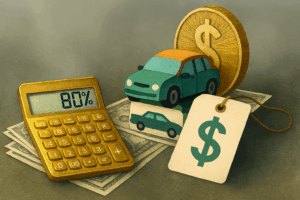Car loans are one of the most common forms of consumer debt, but they are also one of the easiest to miscalculate. Many buyers estimate what they can afford based on rough monthly payment goals, plug numbers into a loan calculator, and hope it fits their lifestyle. But without a clear picture of your actual spending, those estimates can miss the mark. That is where real-time budgeting becomes essential.
Real-time budgeting means tracking your income, expenses, and financial commitments as they happen. It replaces guesswork with clarity. Instead of relying on static budgets or outdated assumptions, you make decisions based on live data. That shift helps you set car loan targets that reflect your true financial capacity, not just what looks good on paper.
Why Traditional Budgeting Falls Short for Car Buyers
Most people build budgets once a month or once a year. They list fixed expenses, estimate variable costs, and set goals. But life is dynamic. Gas prices fluctuate. Insurance premiums change. Maintenance surprises happen. A budget built on averages may not reflect your actual financial behavior.
This disconnect leads to overborrowing. You may qualify for a car loan based on income, but struggle to manage payments once real expenses kick in. Or you may underestimate what you can afford, missing opportunities to invest in a safer, more reliable vehicle.
Real-time budgeting solves this by keeping your financial picture current. It shows what you are spending, saving, and earning right now. That insight helps you set car loan targets that are realistic, sustainable, and aligned with your driving needs.
How Real-Time Budgeting Works
Real-time budgeting uses apps, dashboards, or integrated banking tools to track your financial activity. Every transaction is recorded and categorized. You see your cash flow in motion—what comes in, what goes out, and what remains.
This system updates continuously. If your fuel costs spike one week, you see it immediately. If your grocery bill drops, that change is reflected. You are not budgeting based on last month’s behavior. You are budgeting based on today’s reality.
Benefits for Car Loan Planning
When it comes to car loans, real-time budgeting offers several advantages:
1. Accurate Affordability Assessment
You know exactly how much discretionary income you have. That means you can set a car loan target that fits your lifestyle without straining your budget. No more relying on generic debt-to-income ratios or dealer estimates.
2. Flexible Scenario Planning
You can model different loan amounts and see how they affect your budget in real time. Want to compare a five-year loan on a midsize SUV to a three-year loan on a compact sedan? Real-time data shows the impact on your monthly cash flow instantly.
3. Early Warning Signals
If your spending trends shift; say, your insurance premium increases or your fuel costs rise—you will see it before it becomes a problem. That allows you to adjust your loan target or repayment plan proactively. You are not stuck reacting to financial stress after the fact.
4. Confidence in Decision-Making
With real-time data, you are not guessing. You are making informed choices. That confidence reduces anxiety and improves your ability to negotiate terms, compare offers, and commit to a car loan that truly fits.
Car Loan Spend Tracking vs. Budgeting
Car loan spend tracking is part of real-time budgeting, but it is not the whole picture. Tracking shows where your money goes. Budgeting shows how your money should be allocated. Real-time systems combine both. They help you monitor behavior and adjust strategy simultaneously.
For example, if you notice that dining out is eating into your car maintenance fund, you can reallocate funds immediately. That adjustment may free up room for a higher loan payment or help you reach a down payment target faster. The system is responsive, not rigid.
How to Get Started
You do not need complex software to begin. Start with these steps:
- Link your accounts: Use a budgeting app that connects to your bank and credit cards.
- Categorize your spending: Make sure each transaction is labeled correctly.
- Set baseline targets: Define how much you want to spend, save, and allocate toward your car loan.
- Monitor weekly: Check your dashboard regularly to spot trends and make adjustments.
- Use the data to set loan goals: Look at your average surplus and use that to define a safe monthly payment.
When to Reassess Your Car Loan Target
Car loan targets are not static. Revisit them when:
- Your income changes
- Your expenses shift significantly
- You take on new financial commitments
- You reach a savings milestone
Real-time budgeting makes these reassessments easy. You are not rebuilding your budget from scratch. You are adjusting based on live data.
Real-time budgeting transforms car loan planning from a guessing game into a strategic process. It gives you control, clarity, and confidence. By aligning your loan targets with your actual financial behavior, you avoid overextension and unlock smarter opportunities.




